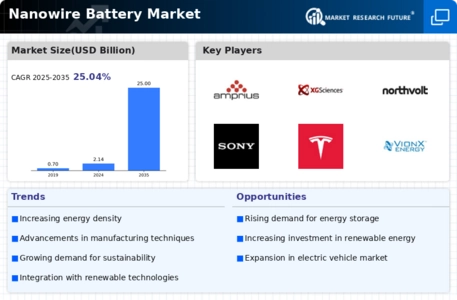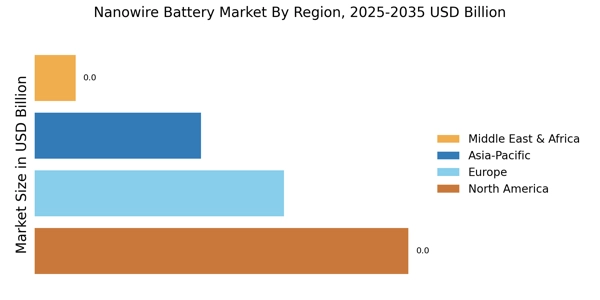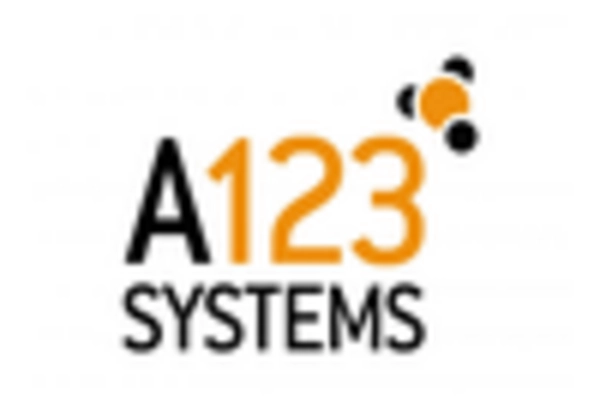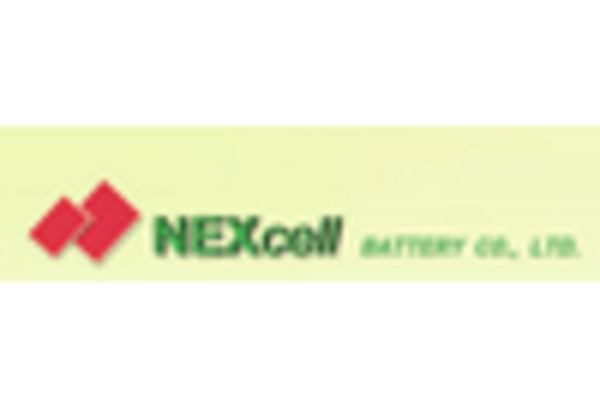Rising Environmental Concerns
Rising environmental concerns are propelling the Nanowire Battery Market forward. As awareness of climate change and pollution increases, there is a growing demand for cleaner energy storage solutions. Nanowire batteries, which can be designed to be more environmentally friendly than conventional batteries, are gaining traction. Their potential for higher efficiency and longer life cycles means less waste and reduced reliance on harmful materials. The market for sustainable battery technologies is projected to grow significantly, with nanowire batteries likely playing a crucial role in meeting these environmental goals. This trend suggests a shift towards more responsible energy solutions.
Advancements in Nanotechnology
The Nanowire Battery Market is experiencing a surge due to advancements in nanotechnology. Innovations in nanowire materials, such as silicon and metal oxides, enhance battery performance by increasing energy density and reducing charging times. Research indicates that nanowire batteries can achieve energy densities exceeding 1,000 Wh/kg, significantly outperforming traditional lithium-ion batteries. This technological evolution not only improves battery efficiency but also extends the lifespan of batteries, making them more appealing for various applications, including electric vehicles and portable electronics. As manufacturers continue to invest in research and development, the potential for nanowire batteries to dominate the energy storage market appears promising.
Growing Demand for Electric Vehicles
The rising demand for electric vehicles (EVs) is a pivotal driver for the Nanowire Battery Market. As governments and consumers increasingly prioritize sustainable transportation, the need for efficient and high-capacity batteries becomes paramount. Nanowire batteries, with their superior energy density and rapid charging capabilities, are well-positioned to meet the requirements of the EV market. Reports suggest that the EV market is projected to grow at a compound annual growth rate (CAGR) of over 20% in the coming years. This growth is likely to stimulate investments in nanowire battery technology, further propelling its adoption in the automotive sector.
Increased Focus on Renewable Energy Storage
The transition towards renewable energy sources is driving the Nanowire Battery Market. As solar and wind energy become more prevalent, the need for efficient energy storage solutions is critical. Nanowire batteries offer a promising alternative due to their ability to store large amounts of energy and discharge it quickly. The energy storage market is expected to reach USD 200 billion by 2026, with a significant portion attributed to advanced battery technologies like nanowires. This trend indicates a growing recognition of the importance of integrating nanowire batteries into renewable energy systems, enhancing their viability and efficiency.
Technological Innovations in Battery Manufacturing
Technological innovations in battery manufacturing processes are significantly influencing the Nanowire Battery Market. The development of scalable production techniques for nanowire batteries is crucial for reducing costs and increasing accessibility. Innovations such as roll-to-roll processing and 3D printing are being explored to streamline production and enhance the performance of nanowire batteries. As these manufacturing technologies mature, they are expected to lower production costs, making nanowire batteries more competitive against traditional battery technologies. This shift could lead to broader adoption across various sectors, including consumer electronics and grid storage.

















Leave a Comment